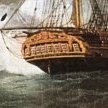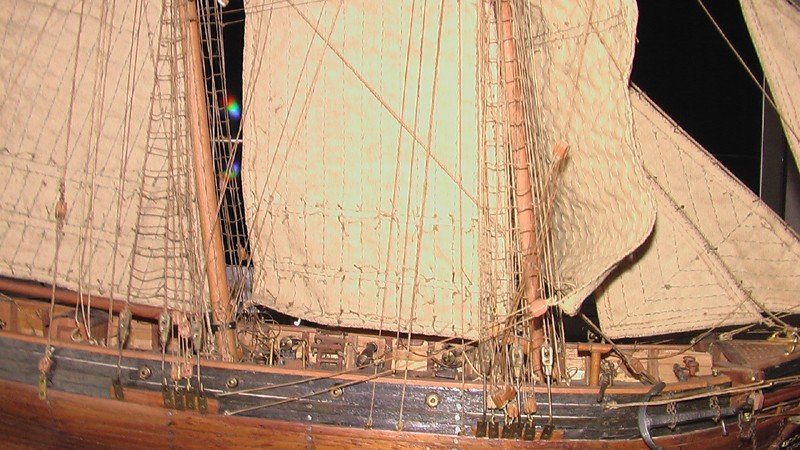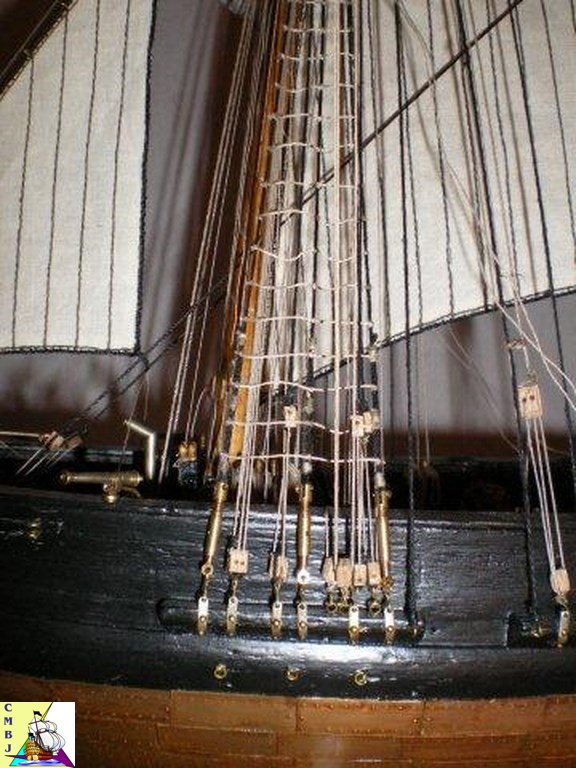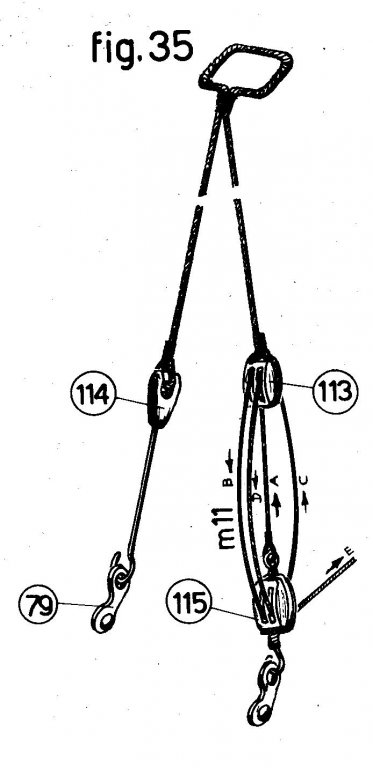
DJPurney
NRG Member-
Posts
21 -
Joined
-
Last visited
-
Would a British cutter such as the Alert or Diligence display a commissioning pennant at the topmast?
-
 mtaylor reacted to a post in a topic:
LaToulonnaise
mtaylor reacted to a post in a topic:
LaToulonnaise
-
Thank You.
-
 mtaylor reacted to a post in a topic:
LaToulonnaise
mtaylor reacted to a post in a topic:
LaToulonnaise
-
The only problem with the French forums is they are in French! This presents a problem in the midwestern United States. Trying to recall my high school French language classes I can make out maybe one word in ten and those classes did not cover nautical terms. I think I am going to go down to my workbench and follow the instructions and photos. Thank You to all for your comments and suggestions.
-
 mtaylor reacted to a post in a topic:
LaToulonnaise
mtaylor reacted to a post in a topic:
LaToulonnaise
-
The more information we get the confusder I become. Thank you Tony for the history. At least we know it was a real ship.
-
 Gregory reacted to a post in a topic:
LaToulonnaise
Gregory reacted to a post in a topic:
LaToulonnaise
-
Amazon offers it for $322.00 (shipped from France) or 95 euros straight from the museum. Yikes.
-
All I can find is that according to Corel it is taken from a model in the French National Maritime Museum.
-
I too have wondered how some of these lines would be adjusted. I wonder if the stretchers are supposed to be some sort of turnbuckle, just poorly modeled. As for the rigging of line 113, for the couple that I did before I posted my question I did reverse the line and put the hauling end at the top. How else could it be secured to a belaying pin without chafing on the rail? Either that or as I suggested earlier it should be hooked to an eyebolt in the deck then belayed. Confusing.
-
 mtaylor reacted to a post in a topic:
LaToulonnaise
mtaylor reacted to a post in a topic:
LaToulonnaise
-
 mtaylor reacted to a post in a topic:
LaToulonnaise
mtaylor reacted to a post in a topic:
LaToulonnaise
-
This makes a lot of sense. If the blocks are secured to the pin rails those lines would be inside the fixed shrouds and not fouling the ratlines. Is the instruction diagram wrong? It is confusing as is the textual instruction. Thanks. I found several internet photos of completed La Toulonnaise models and it does appear that the modelers attached the blocks to the outside of the hull. One fellow substituted turnbuckles for the stretchers.
-
Corel calls part #114 stretchers, deadeyes are not used on this ship. The stretchers are in turn attached to what Corel calls links, part #79, that apparently do the same job that chain plates would if deadeyes were used. The block, part #115, is attached to another link and the free end of the line goes over the rail then to a belaying pin? Doesn't this give me what amounts to two shrouds? The instructions indicate that the second shroud is set up in an identical way to the first but the pulley is attached to the third link and the other end is attached to a stretcher which is in turn attached to the sixth link. Wouldn't this give me a total of four shrouds? Or does a pulley get attached to one side of the ship and the line get attached to a stretcher on the other side?
-
I am baffled. This is Corel’s La Toulonnaise. The instructions for the shrouds are about as clear as mud. Figure 35 shows how the shrouds are attached to the ship. The second pair of shrouds attaches to the third and sixth link. Where does the middle shroud go? It is not mentioned in the instructions. If I understand the instructions each side of the lower mast will have what amounts to six shrouds. Or do the pulleys attach to some point inside the bulwarks or to a belaying pin? Can anyone help clear this up? Don Purney
-
I have treated individual copper plates by holding each plate with tweezers and holding it for just a couple of seconds in a flame then tossing it in a pie tin to cool. You could try quenching in water for a different effect. Tedious but it works. You can't do this with copper tape because of the adhesive backing. The plates come out a variety of darks that looks attractive but not realistic. In sea water the copper plates turned green, much as a copper roof looks. Best of luck Don
-
 WackoWolf reacted to a post in a topic:
Archival Ink Pen Question
WackoWolf reacted to a post in a topic:
Archival Ink Pen Question
-
 flying_dutchman2 reacted to a post in a topic:
Archival Ink Pen Question
flying_dutchman2 reacted to a post in a topic:
Archival Ink Pen Question
-
Archival means PH neutral or at least no acids. Over time (years) acid will attack the surface that was treated. Artists use archival papers, mat board etc. so their paintings will last. It is the ink that you use that should be archival or there are archival markers available at art supply stores and web sites. I think you would be fine with a good quality ink. I used magic marker on deckboards 30 years ago and there is no sign of failure of the materials or glue. Try an art supplies store if there is one in your area or try the www.DickBlick.com art supplies web site or www.Jerrysartarama.com They both cater to artists. www.dickblick.com/markers/archival
-
Amati Riva
DJPurney replied to lambrakos's topic in Building, Framing, Planking and plating a ships hull and deck
Perhaps water based contact cement or cyanoacrylate (crazy glue), epoxy -
Glueing problems.
DJPurney replied to iceblue's topic in Building, Framing, Planking and plating a ships hull and deck
Have you tried contact cement? You have about 10 minutes working time. Humidity doesn't affect it. Elmers and Weldwood are two brand names.
About us
Modelshipworld - Advancing Ship Modeling through Research
SSL Secured
Your security is important for us so this Website is SSL-Secured
NRG Mailing Address
Nautical Research Guild
237 South Lincoln Street
Westmont IL, 60559-1917
Model Ship World ® and the MSW logo are Registered Trademarks, and belong to the Nautical Research Guild (United States Patent and Trademark Office: No. 6,929,264 & No. 6,929,274, registered Dec. 20, 2022)
Helpful Links
About the NRG
If you enjoy building ship models that are historically accurate as well as beautiful, then The Nautical Research Guild (NRG) is just right for you.
The Guild is a non-profit educational organization whose mission is to “Advance Ship Modeling Through Research”. We provide support to our members in their efforts to raise the quality of their model ships.
The Nautical Research Guild has published our world-renowned quarterly magazine, The Nautical Research Journal, since 1955. The pages of the Journal are full of articles by accomplished ship modelers who show you how they create those exquisite details on their models, and by maritime historians who show you the correct details to build. The Journal is available in both print and digital editions. Go to the NRG web site (www.thenrg.org) to download a complimentary digital copy of the Journal. The NRG also publishes plan sets, books and compilations of back issues of the Journal and the former Ships in Scale and Model Ship Builder magazines.









